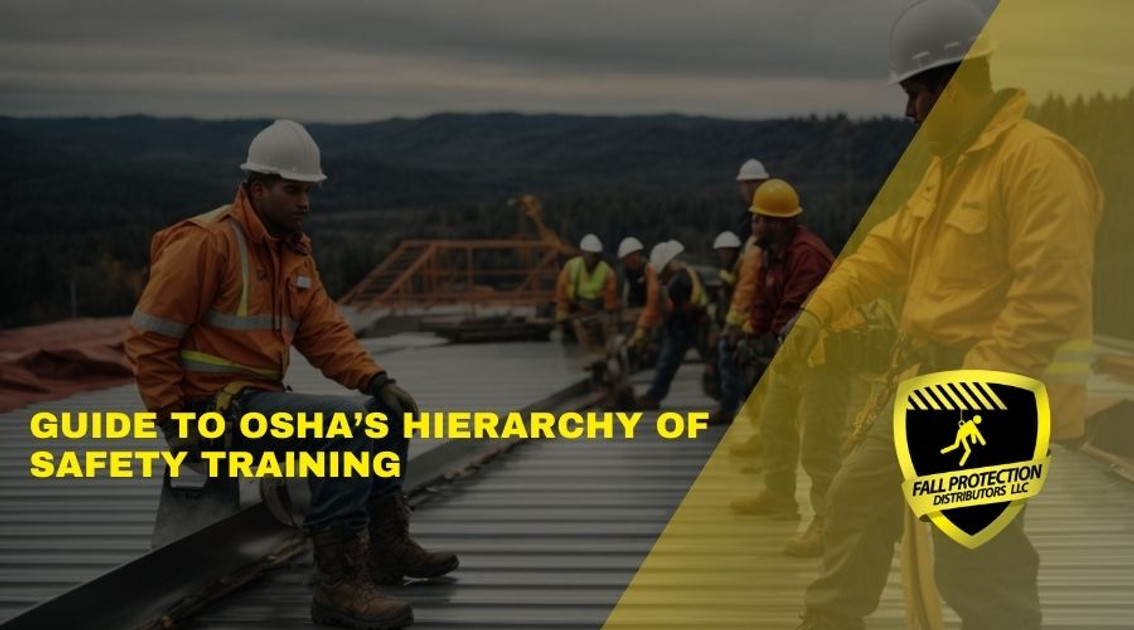Training under OSHA
Posted by Howie Scarboro - CEO Fall Protection Distributors, LLC on Nov 21st 2023
Fall protection plays a role in ensuring safety and it is crucial for employers and employees to follow the standards set by the Occupational Safety and Health Administration (OSHA). In this guide we will explore OSHA’s guidelines on fall protection, the training requirements, and the significance of personal fall protection systems. We will also discuss the three levels of training; Authorized Person, Competent Person and Qualified Person.
1. Understanding OSHAs Fall Protection Guidelines
According to OSHA’s regulations, employers are obligated to provide training to employees who are exposed to fall hazards. This training aims to equip employees with the knowledge and skills to identify and minimize risks associated with falls. The topics covered include complying with OSHA requirements, implementing fall protection measures near edges, preventing objects from falling, and conducting safety equipment inspections.
2. Training Topics and Empowering Employees
The training program aims to empower employees by enabling them to recognize identify and describe fall hazards. It is essential for them to understand types of fall hazards well as how they can prevent injuries resulting from these hazards. Regular refresher trainings are also mandated by OSHA; workers exposed to fall hazards should receive training every two years as a rule.
3. Requirements, for Fall Protection Based on Height
OSHA has established height thresholds for fall protection in industries. In industry fall protection is required when working at a height of four feet. In shipyards the threshold is five feet while in construction it is six feet. For longshoring operations fall protection is mandated at a height of eight feet. Additionally regardless of the fall distance fall protection must be used when working over equipment and machinery.
4. Training for Fall Protection at the Competent Person Level
A aspect of OSHAs fall protection standards involves designating a person [1926.32(f)]. This individual possesses the ability to identify predictable hazards in their surroundings. Is authorized to promptly take corrective measures to eliminate them. The role of a person plays a role in maintaining a safe work environment making it necessary for individuals fulfilling this responsibility to undergo specialized training.
5. Authorized and Qualified Individuals for Fall Protection
Aside from persons OSHA acknowledges the significance of authorized persons [1926.32(d)]. Employers assign duties or locations, on the jobsite to authorized persons who have received approval or assignment from their employer to carry out tasks safely. The level of training and authorization granted varies depending on the nature of the work being performed.
Furthermore the notion of an individual holds significance in situations that involve tasks or equipment. A qualified person, as per the guidelines set by OSHA possesses training or expertise related to a task or equipment. This level of training is vital in scenarios where intricate machinery or specialized equipment is involved and requires an individual with knowledge and skills to operate inspect or maintain such equipment.
6. Personal Safety Systems against Falls
Personal safety systems against falls play a role in ensuring the well being of workers. According to OSHA regulations these systems should be worn with the point of the body harness positioned at the center of an employees back near shoulder level. Understanding how to use and maintain safety equipment against falls is essential for workplace safety.
7. Upholding Compliance with OSHA Standards
Maintaining compliance with OSHA standards goes beyond being a requirement; it represents a commitment to safeguarding employees welfare. OSHAs comprehensive fall protection standards provide a framework for establishing a working environment. Employers must regularly. Update their fall protection programs to align them with the recent OSHA regulations.
8. Conclusion; Prioritizing Fall Protection in Workplaces
In summary placing an emphasis on fall protection is not about fulfilling obligations but also, about fulfilling moral responsibilities.
To establish a safety program it is crucial to understand and implement the fall protection standards set by OSHA. This involves providing training and ensuring the utilization of personal fall protection systems. By investing in fall protection measures employers not comply with regulations. Also cultivate a safer and more secure work environment, for their employees.
Incorporating these practices within the workplace fosters a safety culture leading to a reduction, in accidents and contributing to the well-being and productivity of the workforce. Fall protection goes beyond compliance; it represents a commitment to prioritize the health and safety of all individuals involved in the job including those recognized as persons, competent persons and qualified persons.

